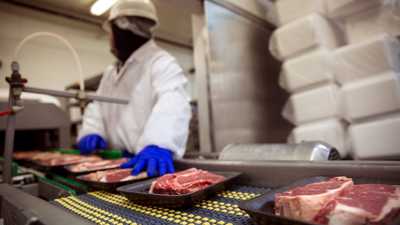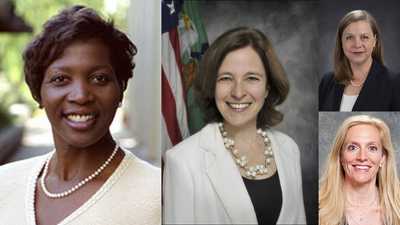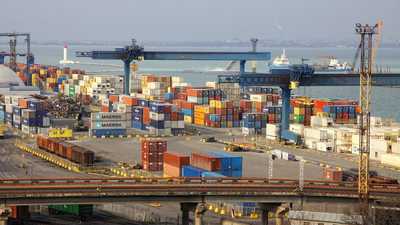| Home | About | Archives | RSS Feed |

The Retired Investor: What About a Weekday Wedding?
 |
If they had their choice, most couples would want to get married on a Saturday. The problem is that there are just so many Saturdays in a year and tying the knot is a crowded trade this year.
Weddings, like so many other events that involve community gatherings, have suffered mightily during the pandemic. Postponements were about the best a couple could hope for during the worse of the COVID-19 crisis. Since then, bottlenecks, supply and labor shortages, not to mention the isolation required to safeguard against the coronavirus itself, have plagued wedding planners continuously. But, as virus fears begin to fade, there is suddenly a mad rush to get hitched.
A look at wedding statistics, according to WeddingWire, which follows nuptials data, shows the average cost of a wedding in 2021 was $22,500. That number is supposed to rise to $23,517 or more in 2022. Last year (2021), saw an increase in weddings from the dismal lockdown year of 2020. In 2022, more couples will be getting married than at any time since 1984 with estimates exceeding 2.5 million.
Underneath these figures is the story of a wedding industry that had suffered steep financial losses from the 2020 season. Many of this year's estimated 2.5 million weddings are simply "reschedules" from 2020-2021 postponements. During the last two years, the industry, like so many others, has had to cope with and then adjust to the costs of the pandemic. For example, increased safety precautions, such as temperature checks, sanitation stations, and spacing concerns has reduced the space available while increasing manpower and health safeguards. In addition, vendors and venues were hit with a vast array of higher costs for everything from caterers, personnel, flowers, paper products, and much more.
What this means for the average couple, who may have been waiting for a year or two, may be a severe case of sticker shock. Adding insult to injury, competition for popular locations, dates, photographers, DJs, and even wedding gowns, makes for a wedding planning nightmare. To just get married somewhere, at some time during the year is a win-win. Obviously, making key decisions now without delay, should be at the top of the list for engaged couples.
On the cost side, there are things couples can do to keep expenses down starting with hiring a competent wedding planner, who knows how to cut costs. You can also reduce guest count, share expenses with another couple who are getting married at the same venue, or in the local vicinity, who can share certain items like flowers. Finally, choose a venue that offers some flexibility on things — lower minimums on food, beverages, and smaller guest sizes. That venue may be harder to come by if you are planning a weekend wedding.
Weekday weddings, therefore, may be just the ticket to keep costs down, while also getting most of what couples want. That is why a lot more couples are seriously contemplating a weekday wedding. Weekday weddings are expected to rise by about 2 percent in 2022, according to a survey by TheKnot.com. In the destination wedding category, 13 percent of weddings took place on weekdays in 2021. Thursdays seem to stand out as the weekday most coveted by couples planning either local, or destination weddings. A Thursday allows for a long weekend of activities for guests.
A weekday wedding in general provides a lot more flexibility around dates, especially when it comes to booking a dream venue. It may also come with a discount on everything from the site itself, to the prices various suppliers normally charge. Most venues also offer added extras on weekdays, including things like reduced minimum spends and complimentary extras, such as arrival cocktails, upgraded beverage options, side dishes, etc.
There will also be much less competition for photographers, bands, make-up and hairdressers. If you are planning a destination wedding, hotels and airfares are less expensive as well. You can also expect a smaller guest list and therefore a more intimate affair.
But will your invited guests agree to come on a weekday? My guess is that more than you think will say "yes."
Who knows, a day off from work may be just what they need. After two years of remote work, they have probably built up a lot of paid time off, or annual leave. And after so much enforced isolation, many more than you might expect may be up for a wedding with friends they may not have seen for a year or two. Destination-wise, I would love a Thursday wedding in Costa Rico right now. How about you?
Bill Schmick is the founding partner of Onota Partners, Inc., in the Berkshires. His forecasts and opinions are purely his own and do not necessarily represent the views of Onota Partners Inc. (OPI). None of his commentary is or should be considered investment advice. Direct your inquiries to Bill at 1-413-347-2401 or email him at bill@schmicksretiredinvestor.com.
The Retired Investor: Are You Ready for $50 Hamburgers?
 |
Fifty dollars may be an exaggeration, unless you frequent some high-priced restaurants in Manhattan. But consumers should be prepared. Beef prices, for the foreseeable future, will continue to climb.
Some cuts of meat are already up 25 percent from where they were six months ago. As the cook in the house, I usually buy a prime rib roast for New Year's dinner, but not this year. The cost for said morsel doubled in price since last year. I bought Australian lamb instead, which was much more reasonable, but just not the same.
I assumed that the price of beef, like almost every other food product, was going up due to supply shortages caused by the pandemic. I knew that as the number of COVID cases climbed and businesses started to shut down, there was a run on everything from toilet paper to steaks.
In my neighborhood (back at the start of the pandemic), consumers flocked to the wholesale stores and supermarkets to buy what meat they could and stock up their freezers. At one point, rationing became a commonplace tool in controlling the consumption of beef, pork, and chicken in a tight market.
One of the major bottlenecks was in the slaughtering and processing part of the business. More than 59,000 meatpacking workers were infected by coronavirus and 250 lost their lives, according to a government investigation. Since then, turnover has been high in this labor-tight market, where low wages and poor working conditions are prevalent. All of these issues have contributed to higher costs.
Climate change has also become a bigger factor in the production of beef. Drought, now a constant companion to ranchers and farmers, last year squeezed supplies of feed for cattle in the Northern Plains. It was so bad that some ranchers were forced to sell even breeding stock to slaughterhouses. This reduced the overall herd of beef by 2 percent, according to the Department of Agriculture.
Now, the southern part of the Plains is experiencing a deepening drought. It is here that most of the cattle in the U.S. is raised. That is expected to reduce the cattle stock even further, marking three straight years of declines and the smallest herd since 2016.
You might think that America's ranchers and farmers are in "hog heaven" as a result of these skyrocketing prices for beef at the supermarket, but you would be mistaken. Cattle ranchers receive about 37 cents on every dollar spent on beef, according to federal data.
As input costs for everything from gasoline to livestock feed keep rising, the ranchers' portion of profits drop even further. The sad fact is that drought is forcing more and more ranchers to reduce their herds, which has caused a glut of product at the slaughterhouses. That, in turn, causes the price the processors are willing to pay to plummet. But those price declines never show up at the grocery store. Why?
It can be summed up in four names — Tyson Foods, Cargill, National Beef Packing Co. and JBS — together, these conglomerates now dominate the meatpacking industry with an 85 percent market share. Over several decades, through mergers and acquisitions and a lax attitude toward competition by regulators, the meat-packing industry became an oligopoly. Once that was accomplished, these four remaining companies, in the name of efficiency, cut their capacity to process beef, closing slaughterhouses, and processing plants across the nation.
As a result, profit margins improved. Company stock prices improved, but ranchers and farmers were increasingly forced to accept whatever prices the processors were willing to pay for their product. Over time, this oligopoly was able to first influence prices and then dictate what they were willing to pay ranchers for their herds. It worked. The four meat packing companies identified above, for example, saw their profit margins jump 300 percent last year.
So, you might ask, who is making money from these steadily climbing meat prices? The government is asking the same question. Last month, the Federal Trade Commission opened an inquiry into how anticompetitive practices by major companies have contributed to supply chain problems.
As for the meatpackers, Senior White House economists Brian Deese, Sameera Fazili and Bharat Ramamurti, in a blog post in December 2021, explained it this way:
"Here is the bottom line: the meat price increases we are seeing are not just the natural consequences of supply and demand in a free market — they are also the result of corporate decisions to take advantage of their market power in an uncompetitive market, to the detriment of consumers, farmers, and ranchers, and our economy."
Bill Schmick is the founding partner of Onota Partners, Inc., in the Berkshires. His forecasts and opinions are purely his own and do not necessarily represent the views of Onota Partners Inc. (OPI). None of his commentary is or should be considered investment advice. Direct your inquiries to Bill at 1-413-347-2401 or email him at bill@schmicksretiredinvestor.com.
The Retired Investor: Crypto Crashes (Again)
 |
While investors focus on the losses that are piling up in the stock market, the cryptocurrency space has suffered far more. The bears say it has further to go, but that may depend on what happens to stocks.
Bitcoin, the grandaddy of crypto currencies, is trading around $36,900 per coin as of Jan. 27, 2022. It has suffered a 50 percent decline since its record high in November 2021. Ethereum, the second most popular coin, has dropped from almost $5,000 to $2,498. In total, the combined crypto market has lost $1.4 trillion over the past week.
At one time, crypto speculators argued that coins like Bitcoin danced to their own music and were uncorrelated with the boring stock and bond markets. Others like Nayib Bukele, the President of El Salvador, made Bitcoin legal tender in his country. Some professional sports stars announced their desire to be compensated in crypto, and even the Mayor of New York City Eric Adams said he would be converting his first three paychecks into Bitcoin and Ethereum.
As more celebrities (like Matt Damon) and companies expressed willingness to accept payment in crypto currencies, it seemed crypto's extreme volatility might be a thing of the past. More and more retail and then institutional players began investing in crypto currencies. Company managements from Tesla's Elon Musk to MicroStrategy's Michael Saylor expressed confidence in the viability of this market. That may have been true, but underneath the hype things have changed. As many traditional investors began to consider electronic currencies, the currency market changed.
That was good news at first, as crypto bulls argued that "crypto had finally come of age." But traditional investors soon began to consider electronic currencies as just another risk asset. As a result, over the last two years, the prices of coins such as Bitcoin and Ethereum have increasingly become linked to the movement of stock prices.
In tougher markets, like we have been experiencing since the new year, investors tend to sell riskier assets like commodities, stocks and now crypto. So, who has been selling? Retail investors for the most part, according to reports from the Wall Street Journal. That makes some sense, since crypto currencies, (in hindsight) were a main beneficiary during the pandemic of the wave of government stimulus money and extended unemployment checks that found its way into many American pockets.
As in every market, as certain coins hit historical highs back in November 2021, many retail buyers poured money into the coin market at its peak. Now, these investors (called weak hands by the crypto faithful) are heading for the exits all at once, while institutional investors, inured to the ups and downs of the market, hold steady. Some believe that there may be a political angle to this sell-off as well.
The government continues to monitor and study ways of reigning in some of the excesses of this crypto currency market. There have been recent reports in the media that the Biden Administration is gearing up to issue a cryptocurrency executive order asking federal agencies to determine crypto risks and opportunities. The specter of a flurry of government regulations dealing with everything from national security to oversight on transactions, products, and platforms has investors worried.
As the crypto market matures, some misconceptions are becoming apparent. Clearly, the idea that crypto currencies could act as an inflation hedge has now proven to be a myth. Nor do they act as a safe haven (like the U.S. dollar) in times of geopolitical uncertainty. Volatility, however, seems to a distinguishing and enduring feature.
The fact is that this marks the eighth time that Bitcoin has fallen 50 percent or more since its inception in 2009. In each case, the price has risen to a higher price, although there have been times when it has traded sideways for months to years. It is not, as many believe, a get-rich-quick scheme, or sure-fire way to riches. Strip out the mystique — what it ultimately could be, or should be — and what do you get? Crypto currencies are simply another class of risk assets. and What's wrong with that?
Bill Schmick is the founding partner of Onota Partners, Inc., in the Berkshires. His forecasts and opinions are purely his own and do not necessarily represent the views of Onota Partners Inc. (OPI). None of his commentary is or should be considered investment advice. Direct your inquiries to Bill at 1-413-347-2401 or email him at bill@schmicksretiredinvestor.com.
The Retired Investor: A New Female Fed
 |
| Lisa D. Cook, left, and Sarah Bloom Raskin have been nominated to join Michele Bowman and Lael Brainard to the Federal Reserve Bank Board, making women the majority for the first time. |
Just before Martin Luther King Jr. Day, President Biden announced three new nominations to the Federal Reserve Bank Board, two of whom are women. If the U.S. Senate approves, women would then account for most of the Federal Reserve Bank's seven-member board.
Lisa Cook and Sarah Bloom Raskin, if confirmed, would join Lael Brainard, who President Biden picked as vice chair, and Michelle Bowman, who is already a board member. In addition, Lisa Cook would be the first Black woman on the board. Women are still in the minority, however, if you include all the Federal Reserve Bank's regional presidents, but the board is where the voting power resides. All-in-all, I say hip-hip hurrah for women!
Don't get the idea that women have been excluded from Fed membership in the past. Plenty of women have served on the central bank's policy-making team and Janet Yellen, the present U.S. Secretary of the Treasury, held the top spot between 2014 to 2018. Secretary Yellen, in commenting about the president's picks, remarked that the U.S. economy has "never really worked" for Black Americans, "or really for any American of color."
In my opinion, the proposed composition of the board would better reflect the actual population of the United States. Women, for example, account for 80 percent of all consumer spending decisions in the U.S., including 93 percent of the decisions on food purchases and 65 percent of automobile purchases. They are the ones who notice inflation, price changes, the cost of day care, and how badly rising prices can stretch the family budget.
If we do see a new composition of the Fed board, don't expect any big changes to monetary policy any time soon. The Fed is still bound and determined to quell inflation, even if that means tighter monetary policy during the next several months. However, the two women nominees for board governors, plus Phillip Jefferson, the third of President Biden's nominations, are expected to place their focus on a healthy labor market.
All three would have a permanent vote on monetary policy (unlike regional Fed presidents who rotate) and their influence over the economy could outlast the administration that appoints them. All three nominees have in the past articulated their commitment to assist workers and to forge greater racial equality. In order to do so, I am betting that the three would be reluctant to push interest rates higher once the inflation scare is resolved.
In the case of Sarah Bloom Raskin, who would be the Fed's top regulator, the Fed's growing focus on climate change could also be strengthened. Raskin, who served as a Fed governor from 2010 to 2014, has advocated the need for financial regulators to prevent climate change from becoming a systemic risk to the banking system.
She sees a need for financial regulatory agencies, like the Fed, to go beyond analysis and planning and face the danger of climate change head on. She argues that the Fed and others should be assisting firms in addressing the risks of climate change, and also play an active role in reducing emissions.
Getting past the U.S. Senate will not be an easy task for the president's picks. The top Republican on the Senate banking Committee, Pat Toomey, has already expressed ‘serious concerns' about the Raskin nomination. It remains to be seen what opposition forms in the coming days over President Biden's remaining nominees.
One can be sure, however, that if by some miracle all three successfully survive the U.S. Senate gauntlet, the future Fed will be more explicitly pro-worker and probably far more attune to the country's needs than ever before.
Bill Schmick is the founding partner of Onota Partners, Inc., in the Berkshires. His forecasts and opinions are purely his own and do not necessarily represent the views of Onota Partners Inc. (OPI). None of his commentary is or should be considered investment advice. Direct your inquiries to Bill at 1-413-347-2401 or email him at bill@schmicksretiredinvestor.com.
The Retired Investor: No-Shows Threaten Economy
 |
Last week, economists calculated that almost 5 million workers failed to show up at their jobs. Given the present upsurge in cases of the Omnicom variant, that should come as no surprise. However, it clearly has Wall Street economists reducing their estimates of first quarter 2022 GDP.
Slower economic growth normally has a negative impact on everything from the stock and bond markets, interest rates and employment. How this will ultimately affect the economy in the months ahead is a question worrying every trader and portfolio manager in the financial markets.
The first warning sign that this wave of coronavirus infection was impacting business came during the holidays. Thousands of flights, we thought, were canceled due to weather-related concerns and maybe some no shows due to the holidays. It soon became apparent that employees from pilots to baggage handlers and everyone in between were getting sick, or forced into quarantine, by the omicron variant.
Since then, a wave of omicron infections has decimated the working forces of supermarkets, shipping ports, transportation hubs, and a variety of factories and food processors throughout the country. I am starting to notice this personally. Just Wednesday, as I stood in a long line at my local supermarket, I noticed the lines seemed to be getting longer, even though holiday shopping is long over.
First, my concern was simply maintaining the 6 feet of spacing since most shoppers were ignoring the footprint markers behind me. Masked, gloved, and behind a plexiglass partition, my turn finally came. I asked the clerk why the lines were so long.
"A lot of people are out sick," said the weary, masked clerk. "So why not hire more people?" I asked. In response, she just laughed, nodding towards the "help wanted" signs behind her. I noticed her nose was poking out from the top of her mask. I held my breath.
The clerk also lamented that her schedule was in chaos, since no one knew which employees would be sent home tomorrow to quarantine, or who would be sick and how long it would be until they returned. "It's the same kind of thing you normally see when there is a big snowstorm. Some make it in, most don't."
And what is happening stateside is also developing throughout the globe. Europe has been struggling with the same issues. China, due to their strict isolation policies, has been managing somewhat better than most countries — until recently. This week, China's Zhejiang Province, home to one of the country's key ports, has suspended or greatly reduced the transportation of manufactured goods and commodities into Ningbo port, thanks to an outbreak of omicron last week.
Unfortunately, Ningbo is one of a handful of the world's largest container ports and an integral link in the world's supply chain connecting producers in East China with buyers of everything from automobiles, electronics, semiconductors, heavy equipment, machines, clothes and even toys. A second major port city, Dalian, a city of 7 million, announced its first cases of omicron Jan. 12, threatening the closure of its port. As a result, ships are heading for Shanghai's huge container port, which is causing congestion and delaying shipments by at least a week.
In August 2021, the port was shut down for a couple of weeks because of COVID-19. Analysts estimated it cost the world about $4 billion a week during that shut down. As it stands, global shipping ports have been working to reduce the congestion that has stranded an armada of container ships along their shores. Here in the U.S., the government has made efforts to relieve the port congestion in Los Angeles. On the East Coast, the New Jersey and New York ports have until recently managed to keep up with port congestion. However, omicron is steadily reducing the number of longshoreman available. As a result, the line of ships building off the coast of Long Island is increasing daily.
During the course of the last week, several economists have downgraded their forecasts for the first quarter 2022 GDP. Some are simply postponing growth, pushing it out to the second quarter. Economists are arguing that while Omicron may hurt growth in the short-term, the variant will flare out, and growth will resume in time to show higher by May or June. Let's hope they are right.
Bill Schmick is the founding partner of Onota Partners, Inc., in the Berkshires. His forecasts and opinions are purely his own and do not necessarily represent the views of Onota Partners Inc. (OPI). None of his commentary is or should be considered investment advice. Direct your inquiries to Bill at 1-413-347-2401 or email him at bill@schmicksretiredinvestor.com.

